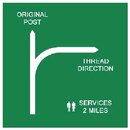R
redacted
Guest
Interesting. I have followed this thread from the beginning but never checked the numbers. Even if he was out of the water by 11:30am, that'd be 20 hours - well within DAN's guidelines but. It'd be difficult to do 2 wreck dives and be out of the water by 9:30am to fit the story huh?
Once you turn a commercial jet and require it to make an unscheduled landing, I imagine you will need a good one.






